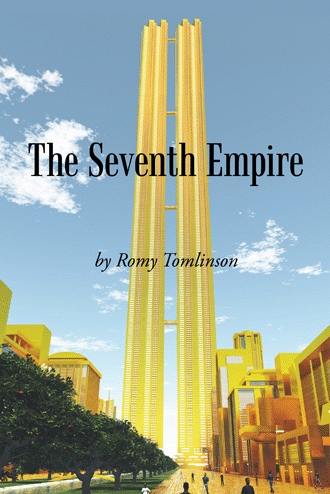Even as E.U. President Gibrialti began his efforts to bring a lasting peace to the Middle East, turmoil in the region continued. Israel had further expanded their settlements in East Jerusalem. Peace talks led by the United States had been going on for years, even decades, but the talks never seemed to end in peace. Hamas continued to terrorize the Israelis with rocket and mortar attacks, which prevented the Palestinian state from ever reaching a real peace with Israel. Hezbollah also continued their harassment of Israel. To complicate the situation further, Iran was supplying many of the weapons that Hamas and Hezbollah were using against Israel.
Adding fuel to the fire were the fresh memories of the Israeli–Iranian conflict of 2025. Diplomatic efforts led by the United States, culminating in the Iranian Nuclear Deal of 2015, formally called the Joint Comprehensive Plan of Action, coupled with covert cyber-warfare by the United States against Iran, had delayed Iran from gaining a functional nuclear weapon. But even with the diplomacy, cyber-attacks, and various economic sanctions, Iran continued to secretly pursue their goal of developing nuclear weapons.
In the fall of 2025, as Iran got closer to achieving that goal, Israel launched a preemptive strike against Iran’s nuclear facilities using massive ‘super-bombs,’ called MOPs (Massive Ordinance Penetrators), assumed to have been supplied by the United States. While the MOPs were not themselves nuclear weapons, they had the explosive force of a small tactical nuke and were thought by Israel to be the only way to ensure destruction of the deeply bunkered Iranian facilities.
This brought widespread condemnation of Israel by the world community, and even Israel’s closest allies, including the United States, now went silent in any support for the Jewish state. With whatever nuclear capability the Iranians may have had now destroyed, they counterattacked Israel with a full onslaught of conventional weapons, and the conflict broke out. Syria soon joined Iran in attacking Israel, forcing Israel to also move against that country.
Even with the numbers stacked against them, Israel was able to bring Iran and Syria to the brink of defeat. This brought Syria’s ally, Russia, along with some of the former Soviet satellite countries from around the Caspian and Black Seas, into the conflict. Russia sent troops in part to support their ally, but mostly to defend their warm water naval base at Tartus, Syria, as well as their airbases, established a decade earlier during the Syrian civil war, at Latakia and Homs. ...
After the Reddings finished dinner, Paul and Lisa picked up the dishes, loaded the dishwasher, and sat down to watch the evening news. About half way through the program, the station interrupted the normal broadcast to bring a live feed from a press briefing that the European Space Agency (ESA) and NASA had hastily called.
The reporter announcing the press briefing wasn’t fully sure what the purpose of the news conference was, but both the ESA and NASA had told all the news agencies that they would have something of ultimate importance to announce to the world.
All of the world’s space agencies joined the ESA and NASA at the news conference and, as the heads of the agencies came to the platform, every news channel focused their cameras on the podium for this ‘breaking news.’ Dr. Rouèche of the ESA was the first to speak.
“Good day. My name is Dr. Rouèche. I’m the Director General of the European Space Agency.”
Everyone in the room immediately became quiet, not wanting to miss a word of whatever Dr. Rouèche had to say.
“Let me start by saying that the information we will be providing you is going to be very troubling, but we have been asked by the heads of our countries to get the information out to you and the public. Once we have provided you with the information, the leaders of the world’s nations will also be holding separate press conferences on what further actions they will be implementing in their countries. You will have many questions, but I must ask that you hold your questions until we finish providing the information. After that, we will take your questions one at a time and answer them as best we can.”
Dr. Rouèche continued. “We have detected a large rogue asteroid coming around the back side of the sun. We have named it Abaddon. Our best calculations at this time indicate that it is on a collision course with Earth and, if it hits, is large enough to cause major worldwide destruction. Although we just discovered the asteroid only two days ago, we have been planning various alternative responses to such an emergency for several years. All of the space agencies before you, as well as scientists across the globe, have been reviewing the different alternatives to avoid this hit. If we are not able to alter the orbital path of the asteroid, however, it will impact the earth in sixty-four days.”
The room erupted with reporters shouting questions from everywhere. After a minute or so, Dr. Rouèche was able to restore order.
“Again, please hold your questions until we finish providing you the information we have,” Dr. Rouèche said firmly.
She continued, “All of the governments around the world have been notified and are taking immediate actions to protect their citizens as best they can in the event of a strike. Everyone should tune into their government’s emergency broadcasts for information on what to do if we ultimately are unable to move the asteroid from its current trajectory. Next, let me ask Dr. Sanchez from NASA to give you a little more detail on the asteroid and the alternatives our scientists are reviewing to avoid a potential strike. Dr. Sanchez.”
With that, Dr. Rouèche sat down and Dr. Sanchez came to the podium.


